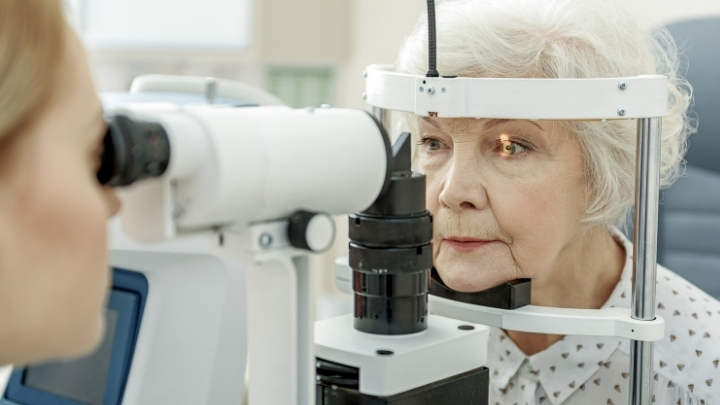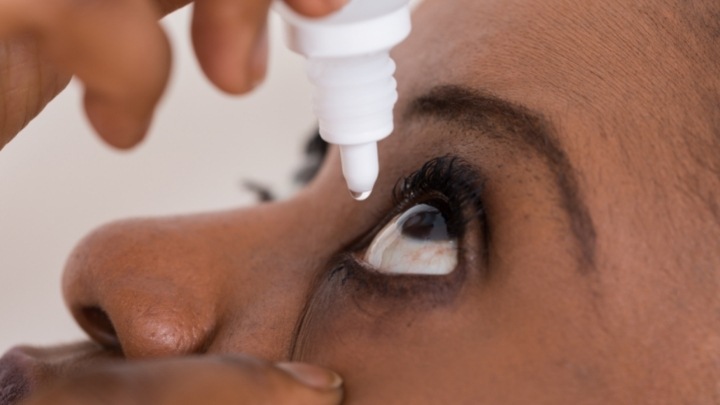Boost Your Eye Health With Krill Oil
8 minute readAccording to the National Eye Institute at the National Institute of Health (NIH), the incidence of eye diseases is expected to double between 2010 figures and 2050. These diseases or conditions include age-related macular degeneration (AMD), diabetic retinopathy, cataracts, and glaucoma.
Age-Related Macular Degeneration
The leading cause of vision loss, AMD destroys the macula, the part of the eye providing clear vision, causing loss in the center of the field of vision. Dry macular degeneration occurs when the center of the retina deteriorates; wet macular degeneration is due to leaky blood vessels under the retina.
The incidence of AMD is expected to double from 2.1 to 5.4 million by 2050. Approximately 2.07 million Americans over age 40 have been diagnosed with macular degeneration.
Diabetic Retinopathy
People with diabetes are more likely to experience eye disease, including cataracts and a condition known as diabetic retinopathy, which is damage to the blood vessels in the retina at the back of the eye. Uncontrolled blood glucose is a risk factor of diabetic retinopathy.
The incidence of diabetic retinopathy is expected to double from 7.7 million to 14.6 million by 2050 and 7.68 million Americans over 40 experience this condition.

Cataracts
The leading cause of blindness worldwide, cataracts are the clouding of the eye’s lens, located behind the retina and pupil, causing blurred vision and eventually blindness, if untreated. Cataracts are the most common reason for vision loss over 40 and are develop in in about 40% of people over 70. At least half of those over 80 have experienced a cataract or have had cataract surgery.
As part of the aging process, the lens yellows and becomes less transparent. Other risk factors include smoking, diabetes, medication, and sun damage. Approximately 24.41 million Americans over 40 have cataracts and the incidence is expected to double from 24.4 to 50 million by 2050.
Glaucoma
Undiagnosed in about half of those who present, glaucoma refers to a group of eye disorders that can lead to vision loss. All types of glaucoma involve damage to the optic nerve that connects the eye to the brain.
| Related: 22 Ways to Effectively Lower Your Blood Pressure |
The optic nerve contains over 1 million nerve fibers that connect the retina, the light-sensitive tissue in back of the eye, to the brain. Eye pressure is a risk factor for glaucoma. In open-angle glaucoma, the fluid that flows in and from the anterior chamber flows too slowly, building up to create pressure that can damage the optic nerve. Hypertension is also a risk factor for glaucoma.
The incidence of glaucoma is expected to increase from 2.7 million to 6.3 million by 2050. Currently, 2.72 million Americans over 40 have been diagnosed with glaucoma.

Krill Oil and Eye Health
Research indicates krill oil may be effective to support eye health and to reduce risk factors for the top four eye disorders. A Harvard Medical School study published in Investigative Ophthalmology & Visual Science detailed the findings that docosahexaenoic acid (DHA) prevented age-related vision loss in mice. Along with eicosapentaenoic acid (EPA), DHA is a long chain omega-3 fatty acid present in krill oil.
| Related: Should You Try a Pescatarian Diet? |
Highly concentrated DHA is present in the retina, as well as in every cell of the body. In fact, studies support the importance of DHA for optimal visual development in infants. Animal studies back this, as well.
Dry eye syndrome has been associated with a deficiency in omega-3 fatty acids. Additional conditions linked to low omega-3s include age-related macular degeneration and diabetic retinopathy.
Macular Degeneration & Krill Oil
In AMD, the toxic molecule A2E builds up at the back of the eye, accumulating in the retinal pigment epithelial cells, eventually causing loss of vision. The mice fed DHA did not experience this buildup.
DHA is the main fatty acid present in both the brain and the retina so a supplement such as found in krill oil may slow the age-related ocular degeneration process.
Diabetic Retinopathy and Krill Oil
Retinopathy is caused by abnormal growth of blood vessels in the retina, the part of the eye responsible for detecting and converting light into electrical signals to the brain. Researchers at Harvard Medical School found that omega-3 fatty acids including DHA and EPA may prevent retinopathy. Specifically, a byproduct of DHA, 2-HDHA,, may prevent the buildup of abnormal blood vessels, known as neovascularization.
In this study, mice were supplemented with DHA. The one mouse who lacked the 5-LOX (5-lipoxygenase) enzyme did not receive this protection because the absence of 5-LOX did not allow for the conversion of DHA to 2-HDHA.
Additional research supports the role of 4-HDHA as a protectant from abnormal blood vessel growth in the mice with the 5-LOX enzyme. Research concluded that adding an omega-3 supplement and/or consuming more fish may help to treat or prevent the abnormal blood vessel growth present in retinopathy.

AREDS2 Study
A 4,000-participant Age-Related Eye Disease Study by the National Eye Institute followed up on findings from an earlier study, concluding that a combination of omega-3 fatty acids with astaxanthin, certain carotenoids, and a phospholipid is much more powerful and bioavailable than any of these substances alone. The combination can also cross the brain blood barrier.
Krill oil is a good source of not only omega-3 fatty acids but also astaxanthin, the carotenoid that provides krill with their reddish color.
Carotenoids and Oxidative Stress
Oxidative stress is a critical factor in numerous ocular conditions, including inflammatory-based conditions of the conjunctiva,, cornea, and uvea; cataract formation; retinal degeneration; optic nerve disorders; degenerative glaucoma.
Research supports the effectiveness of carotenoids to protect against oxidative stress-induced, age-related conditions. The astaxanthin in krill oil provides potent antioxidant abilities because it can penetrate both layers of the cell membrane, trapping free radicals in and out of the cell.
Along with its anti-inflammatory and DNA-protective properties, the antioxidant capabilities of astaxanthin make krill oil effective to inhibit or prevent age-related degeneration, including the maintenance of eye health.

Glaucoma & Krill Oil
The anti-inflammatory properties of astaxanthin and therefore, krill oil, may be effective in addressing glaucoma. Current research suggests that chronic low-grade inflammation may be a contributory factor in glaucoma.
Asthenopia
Eye fatigue or asthenopia is a common complaint of those who work in front of a computer screen. Random subjects who received astaxanthin demonstrated a 54% reduction in eye fatigue, as well as improvements in the ability to shift optical focus. A second study confirmed the initial findings.
The Bottom Line
Eye conditions including age-related macular degeneration, diabetic retinopathy, cataracts, and glaucoma, are expected to double by 2050. Without treatment, these conditions may lead to vision loss or blindness.
However, supplementation with krill oil, which contains omega-3 fatty acids DHA and EPA, as well as astaxanthin, may provide numerous protections against age-related and other ocular conditions and diseases.












